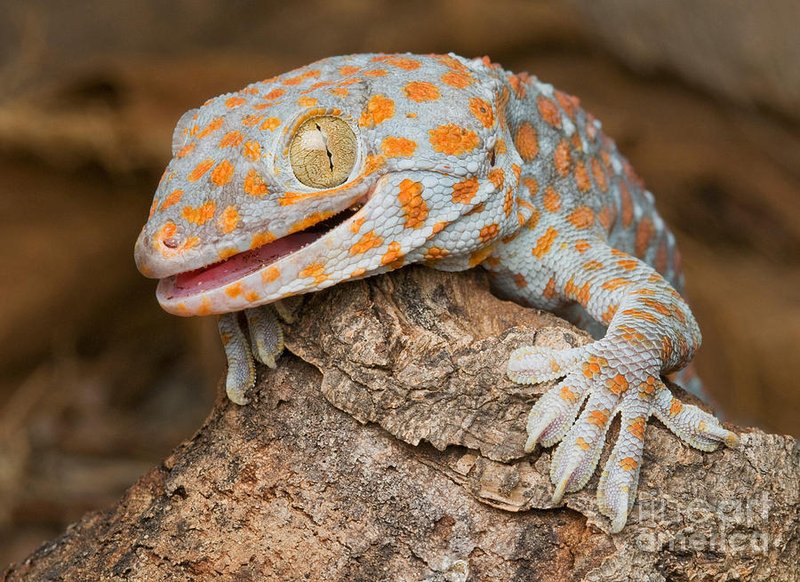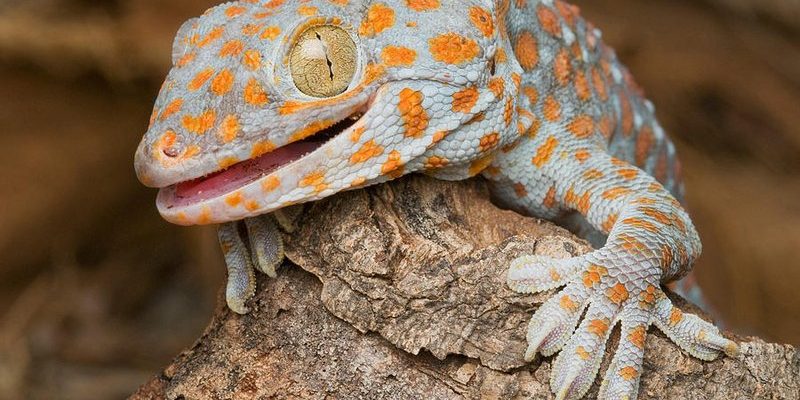
Tokay geckos, known scientifically as *Gekko gecko*, are quite captivating. Imagine a creature that looks like it’s been painted with bright colors and patterns, almost like a work of art. But there’s more to them than just their looks. Recognizing these geckos in the wild can be tricky without some guidance. So, grab a cup of coffee and let’s dive into how to spot these colorful lizards, what makes them unique, and why getting to know them enriches your experience in nature.
Physical Characteristics of Tokay Geckos
One of the first things you’ll notice about Tokay geckos is their vibrant colors. These lizards typically showcase a mix of bright blue and orange or red patterns. The contrast is striking, making them stand out against green foliage or brown bark. You might be wondering, how can I recognize one? Well, let me explain.
Tokay geckos can grow quite large, reaching lengths of up to 14 inches. They have a robust body, with a wide, flattened head and a long tail. This tail is not just for show; it helps them balance on branches as they move. If you see a hefty-looking lizard with distinctive patterns basking in the sun or clinging to a tree, that’s likely your Tokay gecko.
Another characteristic to note is their adhesive toe pads. These help them climb smooth surfaces with ease. So, if you spot a gecko hanging vertically on a wall or tree trunk, it might be a Tokay. Their skin texture is also quite rough compared to many other gecko species, giving them a unique feel.
Behavioral Traits That Set Tokay Geckos Apart
Now that you have a visual idea, let’s talk about how Tokay geckos behave. These creatures are known for their vocalizations. You might hear a loud, barking sound, which is quite distinctive. It almost sounds like they’re having a conversation! This behavior is especially common during mating season, as males call out to attract females. So, if you’re in the right environment and hear these calls, pay attention—you might just spot a Tokay.
Tokays are primarily nocturnal, meaning they are more active at night. If you’re out on a sunset hike or during twilight hours, keep your eyes peeled. They tend to hide in tree hollows or under rocks during the day, coming out to hunt insects when the sun goes down. You might see one ambush a cricket with impressive speed!
Their territorial nature is another fascinating aspect of their behavior. Male Tokay geckos can be quite aggressive, especially when defending their territory. If you observe one chasing another off its perch, that’s a clear indication you’re looking at a Tokay gecko in action.
The Natural Habitat of Tokay Geckos
Understanding where Tokay geckos live can greatly enhance your chances of spotting one. These geckos thrive in tropical and subtropical environments. You can find them in places like rainforests, mangroves, and even urban areas where there are plenty of hiding spots.
In the wild, they often reside in trees, where they can climb and hunt for insects. The bark texture of tree trunks gives them camouflage against predators. If you’re exploring a forest or a botanical garden, look for Tokays clinging to the trunks or branches—they like to stay up high to avoid danger.
Interestingly, they’re also adaptable creatures. Tokay geckos can sometimes be found roosting in human-made structures, such as buildings or homes. So, if you’re walking through a village or town in Southeast Asia and see a large gecko staring back at you, there’s a good chance it’s a Tokay!
Diet and Feeding Habits
Let’s talk about what makes these geckos tick—specifically, what they eat. Tokay geckos are carnivorous, primarily feeding on insects like crickets, beetles, and moths. Their hunting style is pretty fascinating. They can be quite stealthy as they stalk their prey, which is often more than double their size.
You might wonder how they catch these insects. Well, Tokay geckos have sharp, curved teeth that help them grip their food. They use their lightning-fast reflexes to snatch up meals, often consuming a large number on a single night out. If you’re lucky enough to see a Tokay in the wild, watch closely—they might just put on a show as they hunt!
Understanding their diet not only teaches us about their role in the ecosystem but also about the delicate balance of their habitat. By keeping insect populations in check, Tokay geckos contribute to a healthier environment.
Common Misconceptions About Tokay Geckos
There are a few myths out there about Tokay geckos that can lead to confusion. One common misconception is that they’re harmful to humans. Here’s the thing: while Tokays do have a strong bite, they’re generally not aggressive towards people unless they feel threatened. Most of the time, they’d rather avoid confrontation altogether.
Another misconception is that Tokay geckos are easy to catch. While they can be curious, they’re also surprisingly quick. Attempting to catch one could end in frustration, not to mention potential injury from their bites. Instead of trying to catch or handle a Tokay, enjoy observing them from a distance. This is both safer for you and less stressful for the gecko.
So, if you find yourself admiring these lizards, remember to maintain a respectful distance. After all, appreciating wildlife is all about enjoying the experience rather than interfering in their natural behaviors.
Why Identifying Tokay Geckos Matters
Knowing how to identify a Tokay gecko can enhance your outdoor adventures for several reasons. First, it deepens your understanding of biodiversity. Recognizing different species helps you appreciate the variety of life around you. The Tokay gecko, with its vibrant colors and unique behaviors, is a perfect example of nature’s creativity.
Moreover, spotting these lizards can be a fun challenge. It allows you to engage with your environment actively. Picture yourself on a hike, scanning the trees for the buzz of Tokay calls or their vibrant colors peeking through the leaves. This kind of interaction fosters a genuine connection to nature.
Lastly, identifying Tokays and other wildlife contributes to conservation efforts. By understanding their habits and habitats, you can help raise awareness about their protection. For example, if you notice their populations declining in your area, you can engage in discussions about local conservation initiatives.
Identifying a Tokay gecko in the wild can be an exciting endeavor, turning a simple outdoor experience into a memorable adventure. With their striking colors, unique behaviors, and interesting habitats, Tokay geckos offer a glimpse into the wonders of nature. So, next time you’re out exploring, keep an eye out for these alluring lizards.
Remember, the goal is to observe and appreciate them in their natural surroundings rather than disturb them. Whether it’s through their calls, vibrant appearances, or intriguing hunting habits, Tokay geckos add a splash of fascination to our environment. So, get out there, and happy wildlife spotting!

